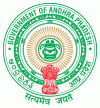Andhra Pradesh (State of Andhra Pradesh)
 |
Andhra Pradesh was once a major Buddhist pilgrimage site in the country and a Buddhist learning center which can be seen in many sites in the state in the form of monastery ruins, chaityas and stupas. It is also known for being the land of Koh-i-Noor and other globally known diamonds from Kollur Mine. It is also a major producer of rice known as the "Rice bowl of India". Its official language is Telugu; one of the classical languages of India, the fourth most spoken language in India and the 13th-most spoken language in the world. Andhra Pradesh's second official language is Urdu.
Early inhabitants were known as the Andhras, tracing their history back to the Vedic period, when they were mentioned in the 8th century BCE Rigvedic text Aitareya Brahmana. According to the Aitareya Brahmana, the Andhras left North India from the banks of the Yamuna river and migrated to South India. The Assaka Mahajanapada (700–300 BCE) was an ancient kingdom located between the Godavari and Krishna rivers in southeastern India. Accounts that people in the region are descended from the Viswamitra are found in the Ramayana, the Mahabharata and the Puranas. The region also derives its name from the Satavahanas, who are also known as Andhras, the earliest kings of Andhra Pradesh and India.
People of the said era supported local art and culture by building temples and sculptures of the Buddhist monuments in the state. It was ruled by the Mauryan Empire, Satavahana dynasty, Salankayanas, Andhra Ikshvakus, Pallavas, Vishnukundinas, Eastern Chalukyas, Rashtrakutas, Cholas, Kakatiyas, Vijayanagara Empire, Gajapati Empire, Mughal Empire, Deccan sultanates, Qutb Shahi dynasty, and Asaf Jahis. In the 3rd century BCE, Andhra was a vassal kingdom of Ashoka, but after his death Andhra became powerful and extended its empire to the whole of Maratha country and beyond.
Andhra Pradesh comprises three major regions namely Rayalaseema in the south-west, Coastal Andhra bordering the Bay of Bengal in the east and Uttarandhra at north-east. The state has 26 districts, 6 in Uttarandhra, 12 in Coastal Andhra and 8 in Rayalaseema. The state also borders a union territory, Yanam – a district of Puducherry, which lies to the south of Kakinada in the Godavari delta on the eastern side of the state. The economy of Andhra Pradesh is the 8th largest in India, with a gross state domestic product (GSDP) of inr 8840000000000 and has the country's 17th-highest GSDP per capita of inr 170000. Andhra Pradesh ranks 27th among Indian states in Human Development Index (HDI). It has a jurisdiction over almost 15000 km2 of territorial waters.
Andhra Pradesh hosted 121.8 million visitors in 2015, a 30% growth in tourist arrivals over the previous year, making it the third most-visited state in India. The Tirumala Venkateswara Temple in Tirupati is one of the world's most visited religious sites, with 18.25 million visitors per year. The region is also home to a variety of other pilgrimage centres, such as the Pancharama Kshetras, Mallikarjuna Jyotirlinga and Kodanda Rama Temple. The state's natural attractions include the beaches of Visakhapatnam, hill stations such as the Araku Valley and Horsley Hills, and the deltas of Konaseema in the Godavari river, and Diviseema in the Krishna river.
Map - Andhra Pradesh (State of Andhra Pradesh)
Map
Country - India
 |
 |
| Flag of India | |
Modern humans arrived on the Indian subcontinent from Africa no later than 55,000 years ago. Their long occupation, initially in varying forms of isolation as hunter-gatherers, has made the region highly diverse, second only to Africa in human genetic diversity. Settled life emerged on the subcontinent in the western margins of the Indus river basin 9,000 years ago, evolving gradually into the Indus Valley Civilisation of the third millennium BCE. By, an archaic form of Sanskrit, an Indo-European language, had diffused into India from the northwest. (a) (b) (c), "In Punjab, a dry region with grasslands watered by five rivers (hence ‘panch’ and ‘ab’) draining the western Himalayas, one prehistoric culture left no material remains, but some of its ritual texts were preserved orally over the millennia. The culture is called Aryan, and evidence in its texts indicates that it spread slowly south-east, following the course of the Yamuna and Ganga Rivers. Its elite called itself Arya (pure) and distinguished themselves sharply from others. Aryans led kin groups organized as nomadic horse-herding tribes. Their ritual texts are called Vedas, composed in Sanskrit. Vedic Sanskrit is recorded only in hymns that were part of Vedic rituals to Aryan gods. To be Aryan apparently meant to belong to the elite among pastoral tribes. Texts that record Aryan culture are not precisely datable, but they seem to begin around 1200 BCE with four collections of Vedic hymns (Rg, Sama, Yajur, and Artharva)."
Currency / Language
| ISO | Currency | Symbol | Significant figures |
|---|---|---|---|
| INR | Indian rupee | ₹ | 2 |
| ISO | Language |
|---|---|
| AS | Assamese language |
| BN | Bengali language |
| BH | Bihari languages |
| EN | English language |
| GU | Gujarati language |
| HI | Hindi |
| KN | Kannada language |
| ML | Malayalam language |
| MR | Marathi language |
| OR | Oriya language |
| PA | Panjabi language |
| TA | Tamil language |
| TE | Telugu language |
| UR | Urdu |















